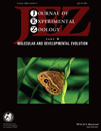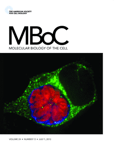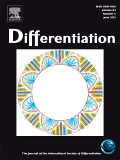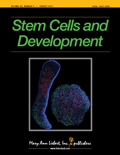
INTERNATIONAL JOURNAL OF DEVELOPMENTAL BIOLOGY
Scope & Guideline
Advancing the Frontiers of Developmental Biology
Introduction
Aims and Scopes
- Developmental Mechanisms and Pathways:
The journal focuses on the molecular and cellular mechanisms that govern development, including key signaling pathways like Wnt, TGF-β, and BMP, which are crucial for pattern formation and differentiation. - Model Organisms in Development:
Research utilizing various model organisms such as zebrafish, Xenopus, and axolotls is prevalent, highlighting how findings in model systems can inform our understanding of developmental processes across species. - Stem Cell Biology and Regeneration:
There is a strong emphasis on stem cell research, including the mechanisms of pluripotency and differentiation, as well as studies on regeneration in both vertebrate and invertebrate model systems. - Evolutionary Developmental Biology (Evo-Devo):
The journal explores the evolutionary aspects of developmental processes, examining how developmental mechanisms have evolved and contributed to diversity among organisms. - Applications of Developmental Biology:
Research that translates developmental biology findings into practical applications, such as regenerative medicine, cancer biology, and agricultural improvements, is also a significant focus.
Trending and Emerging
- Neurodevelopment and Neural Crest Biology:
A noticeable increase in research related to neurodevelopment, particularly studies involving neural crest cells and their contributions to various structures in vertebrates, suggests a growing interest in understanding the complexities of nervous system development. - Regenerative Medicine and Stem Cell Applications:
Research focused on regenerative medicine, particularly involving stem cells and their differentiation pathways, is on the rise, reflecting broader trends in the field aimed at harnessing regenerative potential for therapeutic applications. - Mechanotransduction in Development:
Emerging studies highlight the role of mechanical forces in developmental processes, such as neural crest formation and tissue morphogenesis, indicating a trend towards integrating biophysical aspects into developmental biology. - Single-Cell and Transcriptomic Approaches:
The application of single-cell transcriptomics to study developmental processes is increasingly popular, allowing for more precise characterization of cell populations and their dynamics during development. - Environmental Influences on Development:
There is a growing focus on how environmental factors, such as exposure to chemicals (e.g., Bisphenol A) and mechanical forces, impact developmental processes, suggesting an increasing awareness of the interplay between biology and environmental science.
Declining or Waning
- Historical Perspectives in Developmental Biology:
Papers focusing on historical accounts or perspectives of developmental biology, while still relevant, have become less frequent, indicating a possible shift towards more contemporary and applied research topics. - Basic Descriptive Studies:
There seems to be a decline in purely descriptive studies of developmental processes without a strong mechanistic or applied focus, as the journal increasingly favors studies with clear implications for understanding or manipulating developmental outcomes. - Plant Developmental Biology:
Although plant developmental biology has been a part of the journal's scope, recent publications indicate a waning interest in this area, possibly due to the increasing focus on animal models and their translational relevance.
Similar Journals

Russian Journal of Developmental Biology
Diving deep into the dynamics of development.The Russian Journal of Developmental Biology, published by PLEIADES PUBLISHING INC, serves as a significant platform for researchers and professionals engaged in the field of developmental biology. With the ISSN 1062-3604 and E-ISSN 1608-3326, this journal focused on intricate biological processes and dynamic developmental mechanisms from 2005 until 2017. Although its coverage is currently discontinued in Scopus, it remains notable for its contribution to understanding the pivotal roles of biochemistry and molecular genetics within the context of development. As a publication situated in the competitive quartiles of the field and boasting an influential Scopus rank of #77 out of #78, it has made a unique mark in developmental studies. Researchers and academics seeking to enhance their knowledge of historical advancements in the discipline will find the journal a valuable resource, even as it navigates the transition away from active publication.

JOURNAL OF EXPERIMENTAL ZOOLOGY PART B-MOLECULAR AND DEVELOPMENTAL EVOLUTION
Unraveling the complexities of molecular biology and development.JOURNAL OF EXPERIMENTAL ZOOLOGY PART B-MOLECULAR AND DEVELOPMENTAL EVOLUTION, published by Wiley, is at the forefront of research in the fields of molecular biology, developmental biology, and evolutionary science. With an impressive impact factor reflective of its significance, this journal maintains a prominent position in the academic landscape, evidenced by its Q1 ranking in Animal Science and Zoology, as well as Ecology, Evolution, Behavior and Systematics for 2023. It rigorously publishes innovative research spanning a wide array of topics pertinent to molecular and developmental evolution, making it an invaluable resource for researchers, professionals, and students alike. This journal not only offers Open Access options, enhancing the visibility of groundbreaking findings, but also supports interdisciplinary collaboration by integrating insights from genetics and molecular medicine. With a commitment to advancing knowledge, the journal is poised to contribute significantly to our understanding of biological processes and evolutionary dynamics through its convergence of research from 2003 to 2024.

MOLECULAR BIOLOGY OF THE CELL
Innovating Insights into Cellular MechanismsMOLECULAR BIOLOGY OF THE CELL is a prestigious journal published by the American Society for Cell Biology, focusing on the latest advancements in cell biology and molecular biology. Established in 1990, this journal serves as a vital forum for disseminating innovative research, methodologies, and insights that drive the understanding of cellular processes and their implications in health and disease. With a noteworthy impact factor and recognition within the top quartiles for both Cell Biology and Molecular Biology, it ranks prominently among its peers, with Scopus rankings reflecting its significance in the scientific community. Although the journal does not follow an open access model, it provides essential access options for both institutional and personal subscriptions. Researchers, professionals, and students seeking to expand their knowledge and collaborate on groundbreaking findings will find MOLECULAR BIOLOGY OF THE CELL an invaluable resource in the field.

EvoDevo
Leading the Charge in Developmental and Evolutionary ResearchEvoDevo, published by BMC, is a premier open-access journal dedicated to the fields of Developmental Biology, Ecology, Evolution, Behavior and Systematics, and Genetics. With an impressive Q1 ranking in its category for 2023, EvoDevo stands out as a significant resource for researchers, professionals, and students seeking to explore the intricate relationships between evolutionary processes and developmental mechanisms. Since its inception in 2010, this UK-based journal has provided a platform for innovative research and insights, boasting rigorous peer-review standards that ensure high-quality publications. With the E-ISSN of 2041-9139 and a commitment to freely accessible research, EvoDevo is positioned at the forefront of scientific discourse, making vital contributions to our understanding of biological complexities. As the journal converges years from 2010 to 2024, it serves as a cornerstone for knowledge dissemination, inspiring future research trajectories in evolutionary developmental biology.

JOURNAL OF CELL SCIENCE
Transforming knowledge in cellular innovation.JOURNAL OF CELL SCIENCE, with ISSN 0021-9533 and E-ISSN 1477-9137, is a distinguished publication in the field of Cell Biology, released by COMPANY BIOLOGISTS LTD in the United Kingdom. Since its inception in 1966, this journal has served as a vital platform for disseminating cutting-edge research and reviews that significantly advance our understanding of cellular processes and innovations. Currently positioned in the Q1 category within the 2023 rankings, this journal is recognized for its high impact and quality, holding a notable Scopus rank of 120 out of 285 in the Cell Biology category, placing it within the 58th percentile. While not an open-access journal, it provides extensive access options for readers and institutions, ensuring that pivotal research is accessible to a wide audience. With converged publication years leading toward 2024, JOURNAL OF CELL SCIENCE continues to be an essential resource for researchers, professionals, and students alike, fostering a deeper understanding of the intricate workings of cell biology.

Annual Review of Cell and Developmental Biology
Pioneering Discoveries in Cellular and Developmental ScienceThe Annual Review of Cell and Developmental Biology, published by Annual Reviews, stands as a premier journal in the fields of cell biology and developmental biology. Established in 1995, this influential journal has continuously provided comprehensive and critical reviews that synthesize the latest findings in these vibrant research areas, catering to the interests of researchers, professionals, and students alike. With an impressive impact factor, the journal ranks in the top quartile (Q1) for both Cell Biology and Developmental Biology, boasting remarkable Scopus rankings—#1 in Developmental Biology and #22 in Cell Biology. This emphasizes its significance and authority within the academic community. Although the journal does not operate under an open-access model, it remains a crucial resource for those seeking to stay at the forefront of scientific discoveries and theoretical advancements. The Annual Review of Cell and Developmental Biology continues to solidify its status as an essential platform for sharing knowledge and stimulating scientific inquiry.

DIFFERENTIATION
Exploring the Complexities of Life's Building BlocksDIFFERENTIATION is a respected peer-reviewed journal published by Elsevier Science Ltd, dedicated to advancing knowledge in the fields of Cancer Research, Cell Biology, Developmental Biology, and Molecular Biology. With an established history since 1973, the journal continuously explores the intricacies of cellular and molecular processes that govern differentiation in biological systems, thus playing a pivotal role in shaping contemporary research directions. Currently indexed in the Q3 quartile across multiple relevant categories, it provides a crucial platform for researchers to disseminate their findings and engage with the scientific community. DIFFERENTIATION does not offer open access, but it remains a valuable resource for academics seeking to enhance their understanding of the fundamental mechanisms that underpin life sciences. By fostering a rigorous dialogue among scientists, it contributes significantly to the ever-evolving landscape of biochemistry and genetics.

DEVELOPMENT GROWTH & DIFFERENTIATION
Connecting Research and Discovery in Developmental ScienceDEVELOPMENT GROWTH & DIFFERENTIATION, published by Wiley, stands as a vital journal in the realms of Cell Biology, Developmental Biology, and Medicine. With an ISSN of 0012-1592 and E-ISSN of 1440-169X, this esteemed journal has been a key player in the scientific community since its inception in 1969, continuing to contribute significantly to the understanding of developmental processes and mechanisms underlying growth and differentiation. Ranked Q3 in Cell Biology and Developmental Biology, and Q2 in miscellaneous aspects of Medicine as of 2023, the journal provides a platform for high-quality research articles, reviews, and critical insights that foster academic discourse in these vital fields. Although currently not available as open access, the journal ensures the availability of essential research to its global readership, facilitating collaboration and innovation. Researchers, professionals, and students alike will find DEVELOPMENT GROWTH & DIFFERENTIATION to be an invaluable resource for advancing knowledge and driving forward the scientific inquiry into the intricacies of biological development.

STEM CELLS AND DEVELOPMENT
Innovating Tomorrow's Therapeutics TodaySTEM CELLS AND DEVELOPMENT, published by Mary Ann Liebert, Inc., is a leading peer-reviewed journal dedicated to the rapidly advancing fields of stem cell biology and developmental science. With an ISSN of 1547-3287 and an E-ISSN of 1557-8534, the journal encompasses a broad range of topics central to understanding stem cells' roles in development and regeneration processes. It holds a prestigious standing within its category quartiles, ranking Q3 in Cell Biology, Q2 in Developmental Biology, and Q2 in Hematology for 2023. With its convergence from 2004 to 2024, STEM CELLS AND DEVELOPMENT fosters an innovative platform for researchers, professionals, and students to disseminate groundbreaking research, share insights, and explore novel therapeutic approaches. Open access options enhance the journal's visibility and accessibility, promoting a collaborative exchange of information among the scientific community. Positioned at the forefront of stem cell research and its applications, this journal is vital for anyone seeking to stay informed about the latest advancements and trends within these critical areas of study.

Cell Regeneration
Empowering Breakthroughs in Cellular DevelopmentCell Regeneration, published by SPRINGERNATURE, stands at the forefront of biological research, focusing on the dynamic field of cellular development and regenerative biology. Since its establishment in 2012, this journal has embraced an Open Access model, facilitating widespread dissemination of key findings and fostering collaboration among researchers in the Netherlands and beyond. With an impact factor underscoring its significance, Cell Regeneration is positioned in the Q2 category in both Cell Biology and Developmental Biology as of 2023, ranked #32 out of 82 and #170 out of 285 in relevant Scopus peer fields. The journal encompasses a broad spectrum of research that advances our understanding of cellular processes, offering vital insights into regenerative mechanisms and their applications in therapies. This robust platform not only serves as a valuable resource for researchers, professionals, and students but also encourages scholarly dialogue and innovation in the fast-evolving landscape of cell biology.